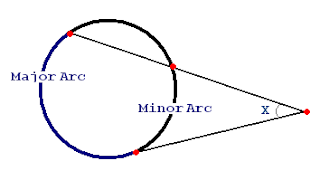Introduction to rectangle geometry:
Geometry is a theoretical subject, but easy to learn, and it has many real practical applications. Eventually, geometry has developed into a skillfully arranged and sensibly organized body of knowledge. Rectangle is defined as the four sided shape polygon which every angle is 90 degree or right angle. It opposite sides are parallel and also equal length. I like to share this Definition of Rectangle with you all through my article.
Formulas of Rectangle in Geometry:
Area of the rectangle formula as,
Area A= l*w
Where l is the length of the rectangle and w is the width of the rectangle.
Perimeter of a rectangle formula as,
Perimeter P= 2(l +w)
Circumradius of the rectangle formula as,
Circumradius R=`(sqrt(l^2+w^2))/(2)`
Inradius of the rectangle formula as,
Inradius r=`(lw)/(l+w)`
Examples of Rectangle in Geometry:
In geometry rectangle problem 1:
Find the area of the following figure:
Solution:
We can find the area of a rectangle by using the following formula
Area A= l*w
In the above figure, the value of length l=4 cm and width w= 6 cm
Substitute the values of l and w into the above formula. Then we get
Area A= 4* 6
=24
Answer: 24 cm2
In geometry rectangle problem 2:
Find the perimeter of the following figure:
Solution:
We can find the Perimeter of a rectangle by using the following formula
Perimeter P= 2(l+w)
In the above figure, the value of length l= 7cm and width w= 12cm
Substitute the values of l and w into the above formula. Then we get
Perimeter P= 2(7+12)
Here we can add the 7 and 12 and then multiplying with 2.
Then we get,
Perimeter P=2(19)
= 38
Answer: 38 cm
In geometry rectangle problem 3:
Find the circumradius of a rectangle with the values of length and width are 3 cm and 4 cm.
Solution:
We can find the circumradius of a rectangle by using the following formula
Circumradius R=`(sqrt(l^2+w^2))/(2)`
Substitute the values of l and w into the above formula. Then we get
Circumradius R = `(sqrt(9+16))/(2)`
= `(sqrt(25))/(2)`
= ` 5/2`
= 2.5 cm
Answer: 2.5 cm
Please express your views of this topic help math homework by commenting on blog
Practice problems of rectangle in geometry:
Find the area of rectangle with the length= 5 cm and width= 7 cm.
Find the perimeter of rectangle with the radius length= 6cm and width= 8 cm
Find the circumradius of a rectangle with the values of length and width are 6 cm and 8 cm.
Answer keys:
35 cm2
28 cm
10 cm
Geometry is a theoretical subject, but easy to learn, and it has many real practical applications. Eventually, geometry has developed into a skillfully arranged and sensibly organized body of knowledge. Rectangle is defined as the four sided shape polygon which every angle is 90 degree or right angle. It opposite sides are parallel and also equal length. I like to share this Definition of Rectangle with you all through my article.
Formulas of Rectangle in Geometry:
Area of the rectangle formula as,
Area A= l*w
Where l is the length of the rectangle and w is the width of the rectangle.
Perimeter of a rectangle formula as,
Perimeter P= 2(l +w)
Circumradius of the rectangle formula as,
Circumradius R=`(sqrt(l^2+w^2))/(2)`
Inradius of the rectangle formula as,
Inradius r=`(lw)/(l+w)`
Examples of Rectangle in Geometry:
In geometry rectangle problem 1:
Find the area of the following figure:
Solution:
We can find the area of a rectangle by using the following formula
Area A= l*w
In the above figure, the value of length l=4 cm and width w= 6 cm
Substitute the values of l and w into the above formula. Then we get
Area A= 4* 6
=24
Answer: 24 cm2
In geometry rectangle problem 2:
Find the perimeter of the following figure:
Solution:
We can find the Perimeter of a rectangle by using the following formula
Perimeter P= 2(l+w)
In the above figure, the value of length l= 7cm and width w= 12cm
Substitute the values of l and w into the above formula. Then we get
Perimeter P= 2(7+12)
Here we can add the 7 and 12 and then multiplying with 2.
Then we get,
Perimeter P=2(19)
= 38
Answer: 38 cm
In geometry rectangle problem 3:
Find the circumradius of a rectangle with the values of length and width are 3 cm and 4 cm.
Solution:
We can find the circumradius of a rectangle by using the following formula
Circumradius R=`(sqrt(l^2+w^2))/(2)`
Substitute the values of l and w into the above formula. Then we get
Circumradius R = `(sqrt(9+16))/(2)`
= `(sqrt(25))/(2)`
= ` 5/2`
= 2.5 cm
Answer: 2.5 cm
Please express your views of this topic help math homework by commenting on blog
Practice problems of rectangle in geometry:
Find the area of rectangle with the length= 5 cm and width= 7 cm.
Find the perimeter of rectangle with the radius length= 6cm and width= 8 cm
Find the circumradius of a rectangle with the values of length and width are 6 cm and 8 cm.
Answer keys:
35 cm2
28 cm
10 cm









